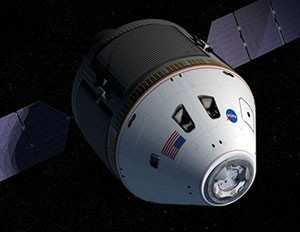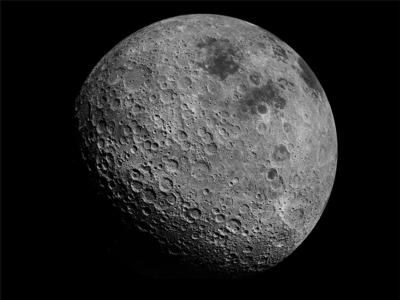NASA’s Artemis I Mission Proceeding Apace
NASA’s Orion capsule reached the moon Monday 21 November 2022, passing around the celestial body’s far side, then firing its engines to pass within a scant 81-miles of the lunar surface. The flyby represents an important milestone in NASA’s $93-billion Artemis Project, and occasions the first instance in which a capsule has drawn so near the moon since the Apollo 17 command module departed lunar orbit in December 1972.

The close approach occurred as the Orion capsule and the three sensor-laden mannequins standing in for human astronauts were on the moon’s storied and much sung-about dark side. Owing to a half-hour communication blackout attributable to the moon’s lying between the spacecraft and control facilities on Earth, NASA flight controllers in Houston did not know if the critical engine firing had proceeded according to plan until the capsule emerged from behind the moon.
Orion re-established contact with NASA’s Deep Space Network, at 07:59 EST after successfully performing the outbound powered flyby burn at 07:44 EST. The firing of the orbital maneuvering system’s engine for two-minutes and thirty-seconds accelerated the spacecraft at a rate of more than 580-miles-per-hour. At the time of the burn, Orion was 199,865-nautical-miles from Earth, 285-nautical-miles above the Moon, and traveling at 4,365-knots. Shortly after the burn, Orion passed within the aforementioned 81-miles of the lunar surface, traveling at an even brisker 4,434-knots.
The outbound powered flyby burn was the first of two maneuvers required to enter a planned, distant retrograde lunar orbit. Orion will perform the distant retrograde orbit insertion burn on Friday, 25 November. The spacecraft will subsequently remain in retrograde orbit for one-week, during which numerous system-checks will be conducted. The distant retrograde will take Orion 34,759-nautical-miles beyond the Moon before it returns to Earth. The capsule’s greatest distance from the moon—approximately 49,749-nautical-miles—will be reached on Friday, 25 November at 16:53 EST. Three days later, on Monday, 28 November at 16:05 EST, Orion will reach its greatest distance from the Earth—approximately 233,320-nautical-miles.
The Deep Space Network, managed by NASA’s Jet Propulsion Laboratory in Southern California, facilitates communications with and control of Artemis I missions beyond low-Earth orbit. Functions of the Deep Space Network include spacecraft trajectory corrections, powered flyby burns, and insertion into and departure from distant retrograde orbits. Conversely, the Near Space Network provides supplemental mission navigation data by dint of its constellation of data relay satellites.
The Deep Space Network consists of three equidistantly-spaced facilities, each separated from the next by approximately 120° of Earth longitude. The facilities are located in at Goldstone, near Barstow, California, U.S.A.; near Madrid, Spain; and near Canberra, Australia. The placement of these sites permits unbroken communication with spacecraft regardless of Earth’s rotational position. Following its lunar flyby, Orion initially regained signal with the Madrid facility, then transitioned signal to Goldstone.
According to NASA, Orion has used 76 fewer pounds of fuel than expected. The surplus affords controllers unforeseen latitude for maneuvering the aircraft throughout the remainder of the Artemis I mission.
Artemis I mission manager Mike Sarafin remarked: “The results were eye-watering. The rocket performed and/or exceeded expectations.” Sarafin went on to say that Orion’s performance thus far has conformed to predictions or deviated from such by less than 0.3-percent.

The mobile launcher for the Space Launch System (SLS) rocket has fared less well than the Orion spacecraft. Comprising a base and tower which collectively provide ground-power and fuel to the SLS rocket prior to liftoff, the mobile launcher was discolored and damaged during the Artemis I launch. “The mobile launcher itself has a little bit of damage to it, but it will be ready to fly the crewed launch on Artemis II,” Sarafin asserted.
Damage was limited, for the most part, to the launcher’s deck and an elevator within its tower. “We had the world’s most powerful rocket, and the pressure basically blew the doors off our elevators,” Sarafin conceded. “Right now, the elevators are inoperable.”
Damage to the mobile launcher’s pneumatic lines was discovered in the hours after the launch, as was and a piece of silicon material called RTV—likely come loose from the Orion spacecraft during either the launch or Hurricane Nicole.
NASA officials insist damage to the mobile launcher is minor and will be repaired well in advance of the Artemis II mission’s 2024 launch window.
The Orion spacecraft will remain in lunar orbit until 01 December 2022, at which time it will conduct a thruster burn to set it on course for Earth and an 11 December splashdown in the Pacific Ocean.
 ANN's Daily Aero-Term (04.30.24): Runway Centerline Lighting
ANN's Daily Aero-Term (04.30.24): Runway Centerline Lighting ANN's Daily Aero-Linx (04.30.24)
ANN's Daily Aero-Linx (04.30.24) Airborne 04.24.24: INTEGRAL E, Elixir USA, M700 RVSM
Airborne 04.24.24: INTEGRAL E, Elixir USA, M700 RVSM Airborne 04.29.24: EAA B-25 Rides, Textron 2024, G700 Deliveries
Airborne 04.29.24: EAA B-25 Rides, Textron 2024, G700 Deliveries Airborne-NextGen 04.23.24: UAVOS UVH 170, magni650 Engine, World eVTOL Directory
Airborne-NextGen 04.23.24: UAVOS UVH 170, magni650 Engine, World eVTOL Directory




